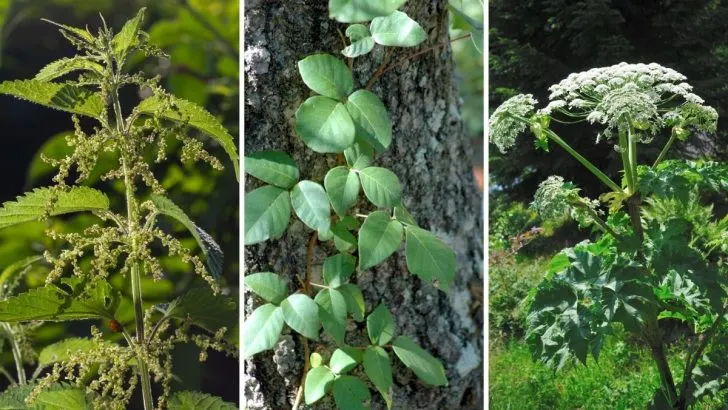Imagine the shock of discovering that a plant you’ve lovingly tended can cause discomfort or even harm with just a touch!
Whether you’re a seasoned horticulturist or a newly minted plant enthusiast, being aware of these touchy neighbors is crucial to ensure your gardening journey remains enjoyable and safe.
Walking through a garden can sometimes feel like navigating a botanical minefield. We’ve all experienced the frustration of brushing against a plant, only to be rewarded with itching, burning, or worse.
By understanding their nature, where they’re at home, and how they function, you’ll be able to enjoy their aesthetic while keeping those troublesome side effects at bay.
As we dive into this fascinating world of protective plants, the goal isn’t to frighten you away from your botanical adventures but to equip you with the tools you need to appreciate your garden—minus any unwelcome surprises.
1. Poison Ivy (Toxicodendron radicans)
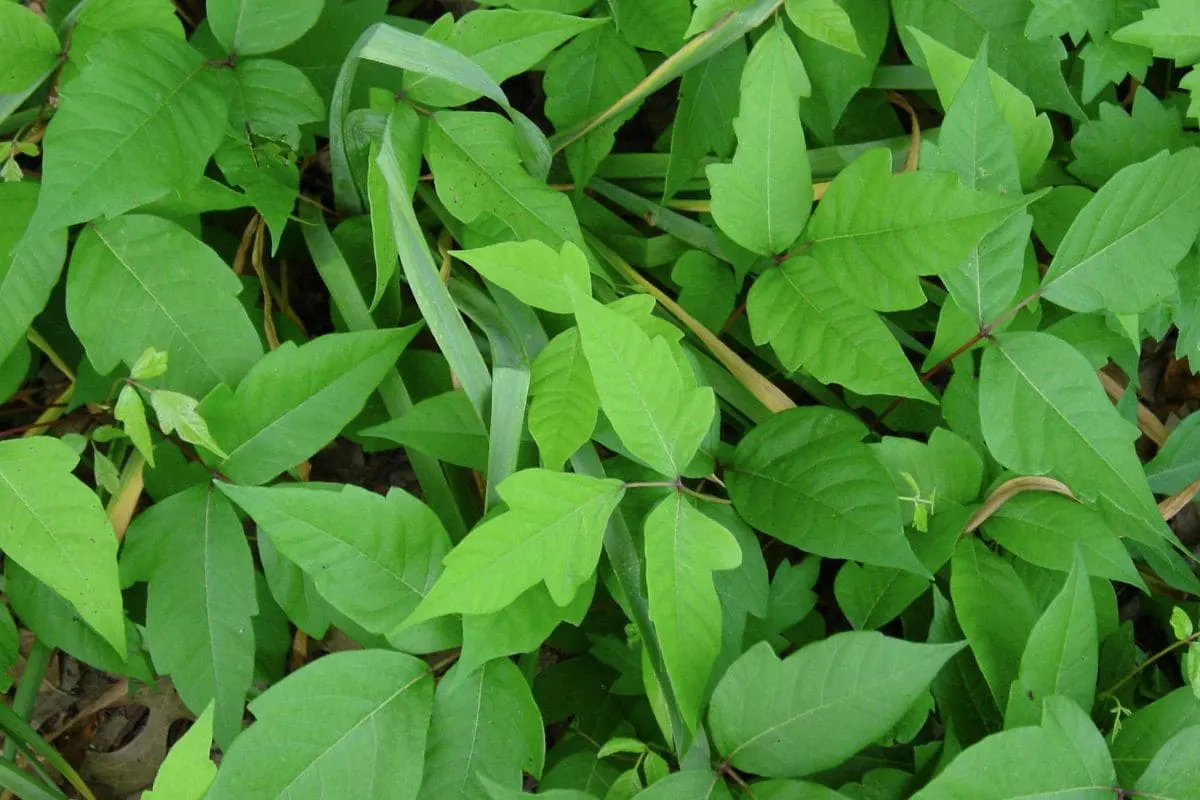
When it comes to plants that send shivers down the spine of outdoor lovers, Poison Ivy is often the first that comes to mind.
Renowned for its rash-inducing properties, this plant is native to North America and flourishes across diverse settings, from dense forests to bustling urban landscapes. I
ts adaptability makes it a frequent visitor in many backyards, and its persistence in growing as either a vine or a shrub can sometimes overshadow other flora unless kept in check.
At the heart of Poison Ivy’s infamous repute is urushiol, a sticky oil present in every part of the plant. This substance can trigger intensely itchy and blistering rashes upon contact, proving that even a fleeting touch can lead to days of discomfort.
Nevertheless, it plays a crucial ecological role, offering sustenance and shelter to a variety of wildlife, including birds and insects.
For those managing gardens, safeguarding oneself from Poison Ivy involves donning protective clothing, establishing barriers, and responsibly removing the plant to stop its spread.
Recognizing the hazards and implementing preventive strategies allow you to admire this plant’s rugged beauty while shielding your skin from its irritating secret.
2. Giant Hogweed (Heracleum mantegazzianum)
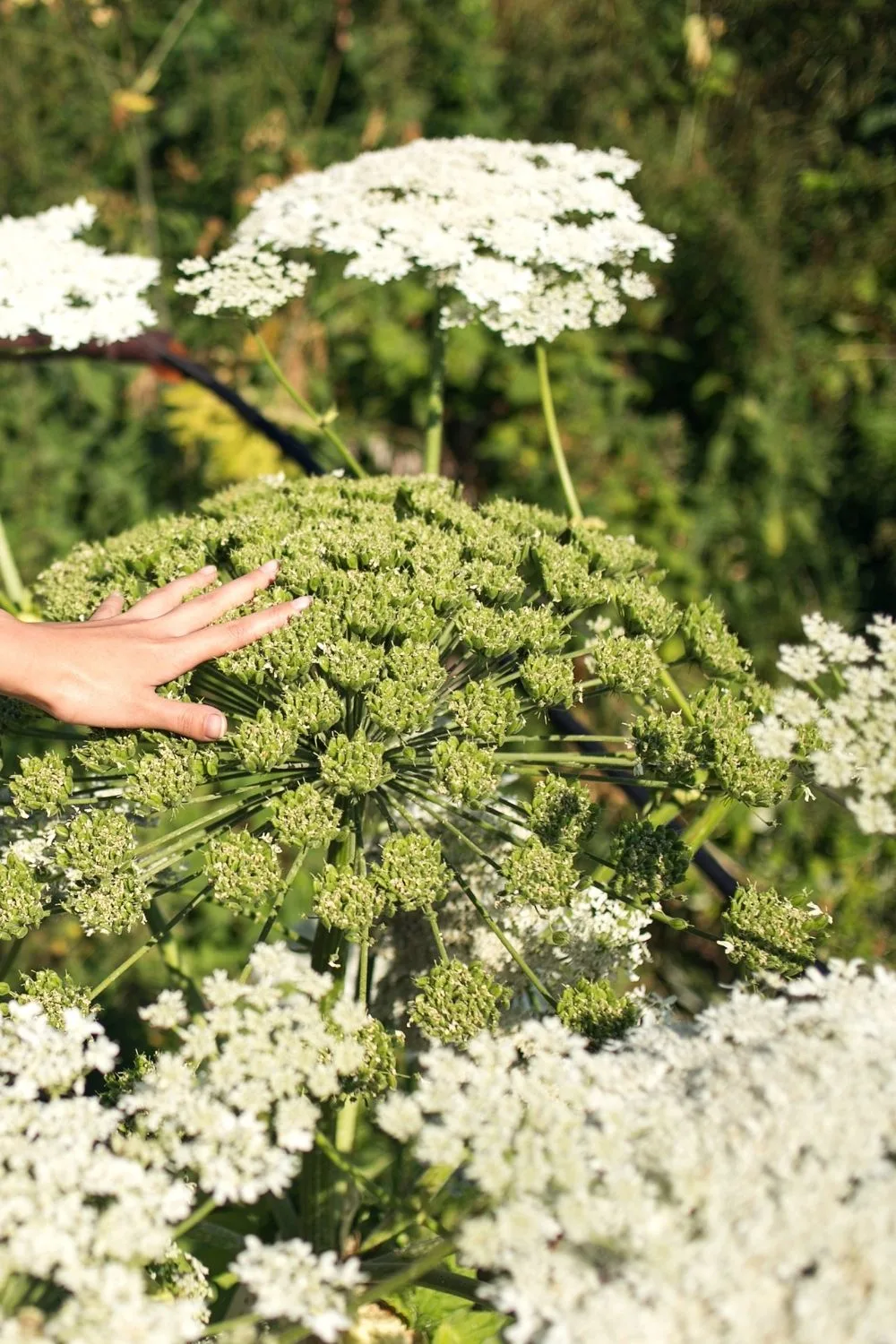
Towering over most garden flora is the awe-inspiring Giant Hogweed, which can easily reach dizzying heights of 15 feet.
While its striking white floral clusters can certainly captivate admirers, this plant, native to the Caucasus region of Eurasia, has become a notorious invader in parts of North America and Europe.
Its penchant for moist, fertile environments means it thrives along waterways and in rich soils, where its imposing presence often bullies native species.
The real danger of Giant Hogweed lies in its sap, laden with furanocoumarins. These compounds can lead to severe skin reactions, including blistering and heightened sun sensitivity, resulting in excruciating burns upon exposure to sunlight.
Moreover, the plant’s fumes can provoke respiratory issues when inhaled. Given its stubborn nature and potential health hazards, handling Giant Hogweed must be approached with extreme caution.
If you spot this behemoth in your vicinity, it’s imperative to notify local authorities to prevent further spread and safeguard both people and indigenous plants.
3. Stinging Nettle (Urtica dioica)
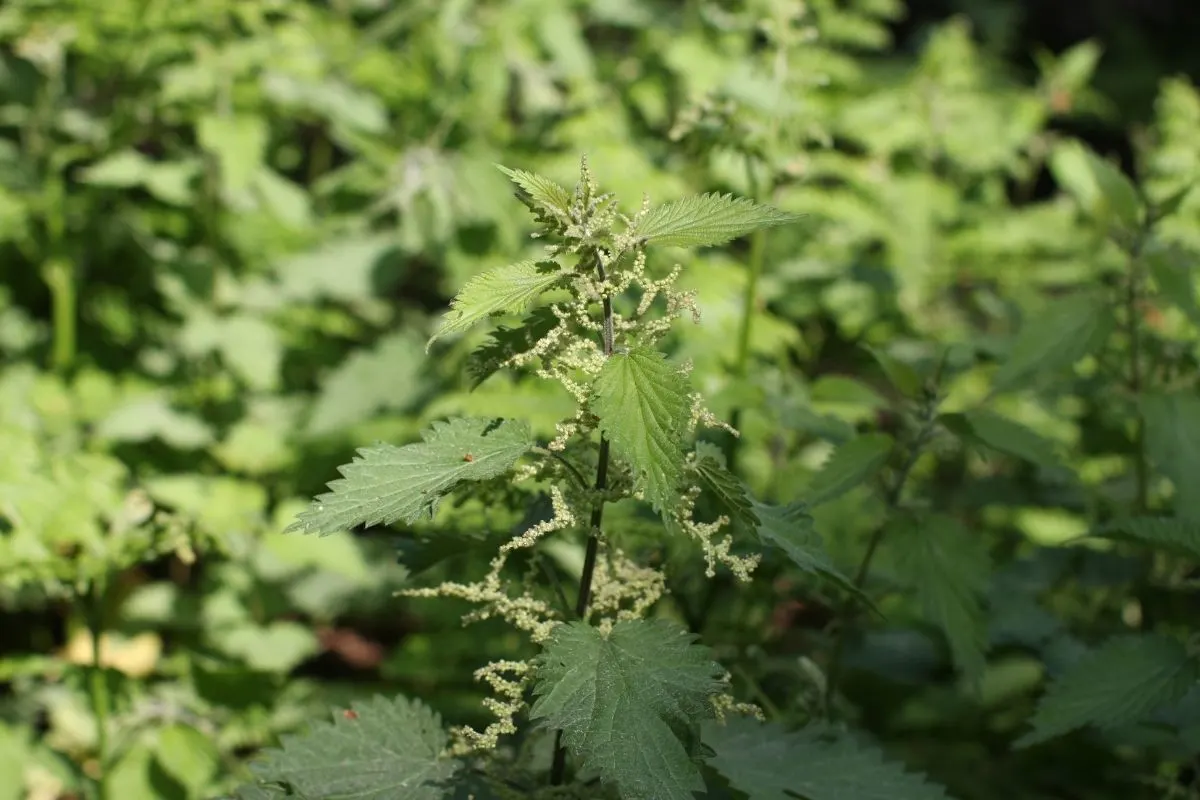
Stinging Nettle is a perplexing blend of asset and adversary in the plant world. This resilient perennial is at home across Europe, Asia, parts of North America, and beyond.
Thriving along riverbanks and forest edges, nettle’s preference for nitrogen-rich soils often sees it popping up in disturbed areas.
Growing up to six feet tall, this plant displays serrated, heart-shaped green leaves dotted with tiny, hair-like spines known as trichomes, which deliver an irritating sting upon contact.
Despite its prickly reputation, there’s more to Nettle than meets the eye. Once cooked or dried, the plant is a nutritional powerhouse, rich in vitamins A, C, K, and minerals like iron and calcium.
Historically, it has featured in culinary and medicinal practices worldwide. Its presence in gardens can also be beneficial, attracting helpful insects such as ladybugs and lacewings, which aid in pest control.
By treating Nettle with respect and harnessing its diverse benefits, gardeners can transform this troublesome weed into a valuable ally for both their well-being and their garden’s natural balance.
4. Oleander (Nerium oleander)

Beneath the striking beauty of the Oleander’s blossoms lies a potent danger. This Mediterranean native, beloved for its strikingly vibrant flowers in hues of pink, red, white, and yellow, as well as its evergreen leaves, thrives in balmy climates with sunny skies and well-drained soil.
Despite its charm, all parts of the Oleander plant harbor cardiac glycosides, toxic compounds that can cause severe health issues if ingested or touched.
The plant’s sap, if it comes into contact with skin, may cause irritation or allergic reactions, and consuming any part of the plant can lead to nausea, vomiting, irregular heart rhythms, or even more severe outcomes.
For gardeners opting to cultivate this alluring but hazardous shrub, it’s wise to wear gloves and plant it in areas inaccessible to children and pets.
Admiring Oleander from a safe vantage point allows you to appreciate its aesthetic contributions without compromising safety.
5. Rosary Pea (Abrus precatorius)
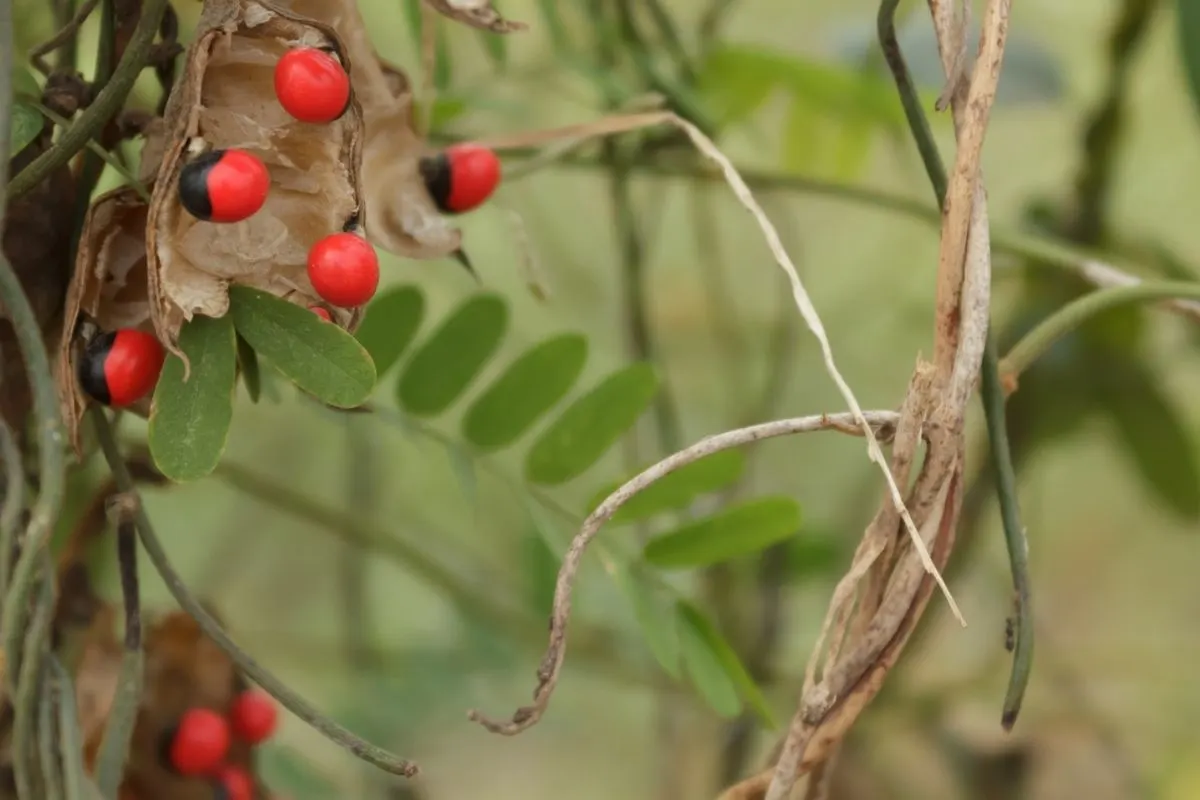
The Rosary Pea is a vine of striking beauty, famed for its vibrant red seeds adorned with a signature black spot. Originating from the sunny climes of Asia and Africa, it thrives in warmth and sunlight.
Its potential for rapid spread has rendered it invasive in certain regions. However, this ornamental marvel comes with a chilling caveat—its seeds contain abrin, a toxin so potent that ingestion can be deadly.
Touching these seeds can result in skin irritation, and if ingested, the toxins can severely impact the liver, kidneys, and more, potentially proving fatal.
As such, gardeners should exercise extreme caution when dealing with Rosary Pea, ensuring the safety of both children and pets. Despite its captivating appearance, this plant demands that admiration always be accompanied by vigilance and care.
6. Jimsonweed (Datura stramonium)
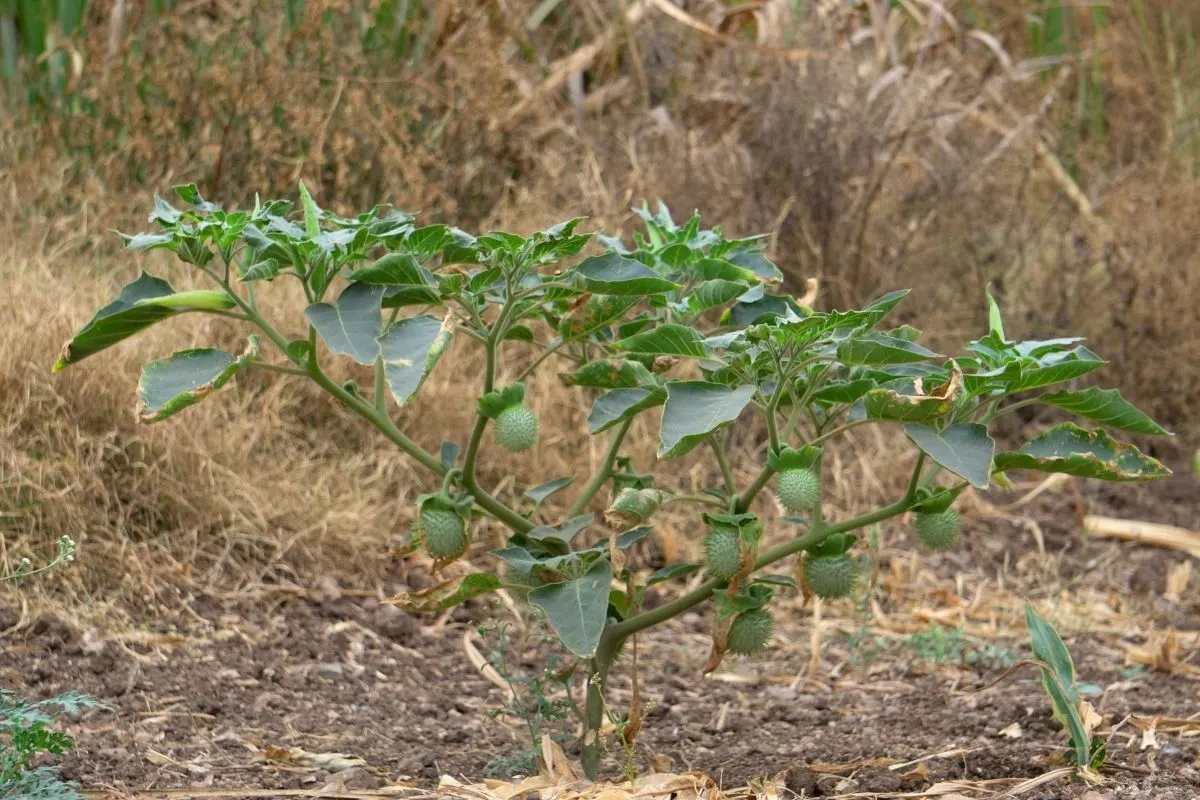
Jimsonweed, or “Devil’s Trumpet,” is a plant that captivates the eye with its large, trumpet-like flowers, yet its dark side poses significant health threats. Originating in North America, it has spread to diverse locales, effortlessly colonizing disturbed soils and abandoned lands.
While it might not always be invasive, its self-seeding nature can make it a steadfast presence in gardens if left unchecked.
Every part of Jimsonweed is laced with toxic alkaloids like scopolamine, hyoscyamine, and atropine, which can lead to severe poisoning if ingested or touched. Skin contact may cause irritation, and consuming the plant can produce hallucinations, heart palpitations, confusion, and severe respiratory issues.
Despite its dangers, Jimsonweed has been woven into the tapestry of traditional medicine and folklore, often associated with mystical and medicinal uses. For those growing this mesmerizing plant, extreme care is warranted to handle it safely while appreciating its unusual beauty.
7. Monkshood (Aconitum spp.)

A fixture of mountainous regions in Europe and Asia, Monkshood delights with its hood-shaped flowers and striking colors of blue, purple, and white. Though it may seem like a quaint addition to any garden, this plant is one of the most toxic you might encounter.
Flourishing in cool, moist conditions with partial shade, it is not invasive, making it a manageable garden resident with caution.
The plant’s danger lies in its alkaloids, particularly aconitine, which can cause serious poisoning upon ingestion or skin contact. Simply brushing against Monkshood may result in numbness and tingling, while ingesting it can lead to dire symptoms such as vomiting, irregular heartbeat, and paralysis.
Due to its high toxicity, handling Monkshood requires utmost care, using gloves and protective clothing to avoid contact. For those who choose to grow this stunning plant, ensuring it is out of reach of children and pets is essential.

